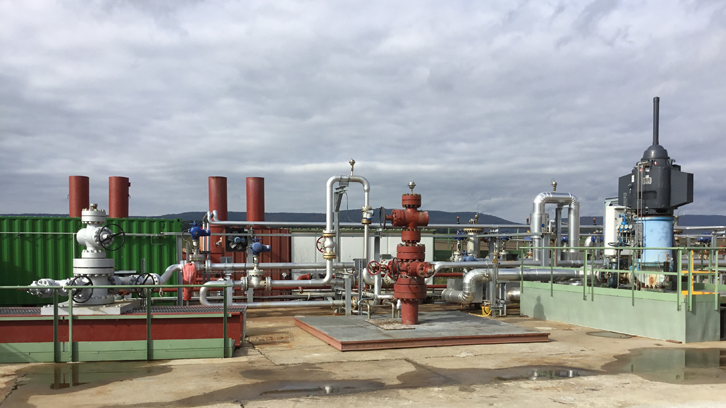Induced seismicity in deep geothermal reservoirs

The requirement to move forward to a sustainable energetic model has enhanced the research in renewable and clean energy sources. Geothermal energy is one of these sources. Heat stored in the Earth’s subsurface is used to obtain thermal energy for domestic heating, district heating systems, industrial processes or electrical power generation. In the last years the European Union has prompted the development of large geothermal energy projects, which are now operative in France, Germany, United Kingdom, Netherlands or Belgium, among other countries.
High-temperature geothermal resources are required for electrical power generation (with temperatures above 150oC and reservoir depths between 1500 and 5000m). The exploitation of these reservoirs is carried out through the exchange of heat between the underground hot rocks and a fluid, normally water, which is injected at low temperature. The injected fluid becomes warmer while moving through the reservoir and is ultimately recovered by extraction wells. However, reservoir permeability is normally not high enough to produce economically viable flow rates. In those situations, stimulation is required to increase the reservoir permeability by injecting high-pressure fluids. This injection produces the opening and sliding of pre-existent fractures and the generation of new fractures in the rock. Such enhanced or new fractures increase the connectivity of the pre-existent ones, thus enhancing the permeability of the reservoir.
The geothermal reservoirs that need stimulation phases are called Enhanced Geothermal Systems (EGS). Their stimulation phases produce low-magnitude induced seismicity (also called micro-seismicity, i.e. low-magnitude earthquakes), that sometimes can be noticed and may potentially result in damage at the Earth’s surface. Understanding how this seismicity is produced, as well as developing protocols to mitigate or prevent it, is a key aspect to ensure the social acceptance and viability of this kind of clean energy projects.
In a recent published article in the journal Geothermal Energy, researchers from the Departament de Geologia have studied the induced seismicity produced during the stimulation of the Rittershoffen geothermal reservoir (France). A particularity of reservoir is that induced seismicity correlated with fluid pressure drops detected at the injecting well. To understand this process, a series of hydro-mechanical numerical simulations have been carried out to investigate fracture sliding during injection and migration of pressurised fluids.
The results show how the interconnection between sets of fractures with different orientation, with one set able to slide and produce seismicity while the other one able to get open without causing seismicity, might result in the generation of pressure drops within the reservoir. These results match the mixed-mechanism stimulation model (where fractures slide and open simultaneously), which is earning scientific support as a good explanation for some of the processes observed during stimulation of geothermal reservoirs.
This work has been carried out in collaboration with the Institut Cartogràfic i Geològic de Catalunya (ICGC), the ResFrac Corporation consultancy (EEUU), and with the participation of researchers from the Universitat de Barcelona and the Geological Survey of the United States. This publication is part of an Industrial PhD program of the AGAUR, and is funded by an agreement between the UAB and the ICGC.
References
Piris, G., Griera, A., Gomez-Rivas, E., Herms, I., McClure, M. W., & Norbeck, J. H. (2018). Fluid pressure drops during stimulation of segmented faults in deep geothermal reservoirs. Geothermal Energy, 6(24). DOI: https://doi.org/10.1186/s40517-018-0110


